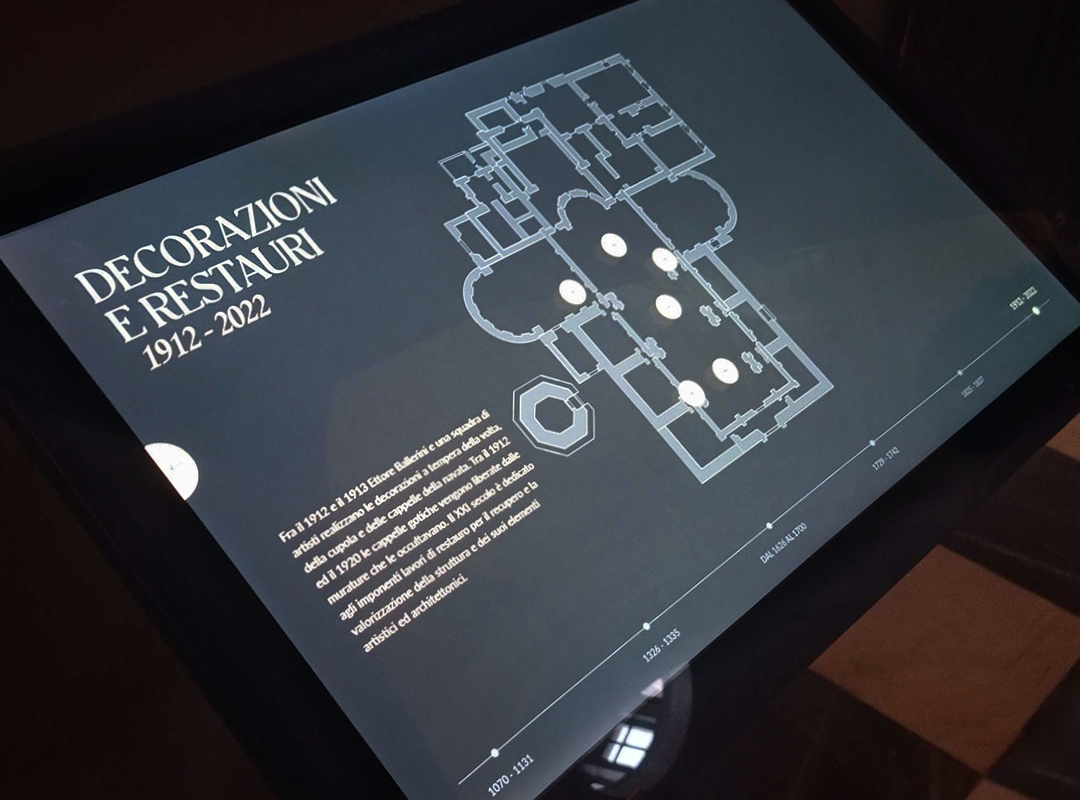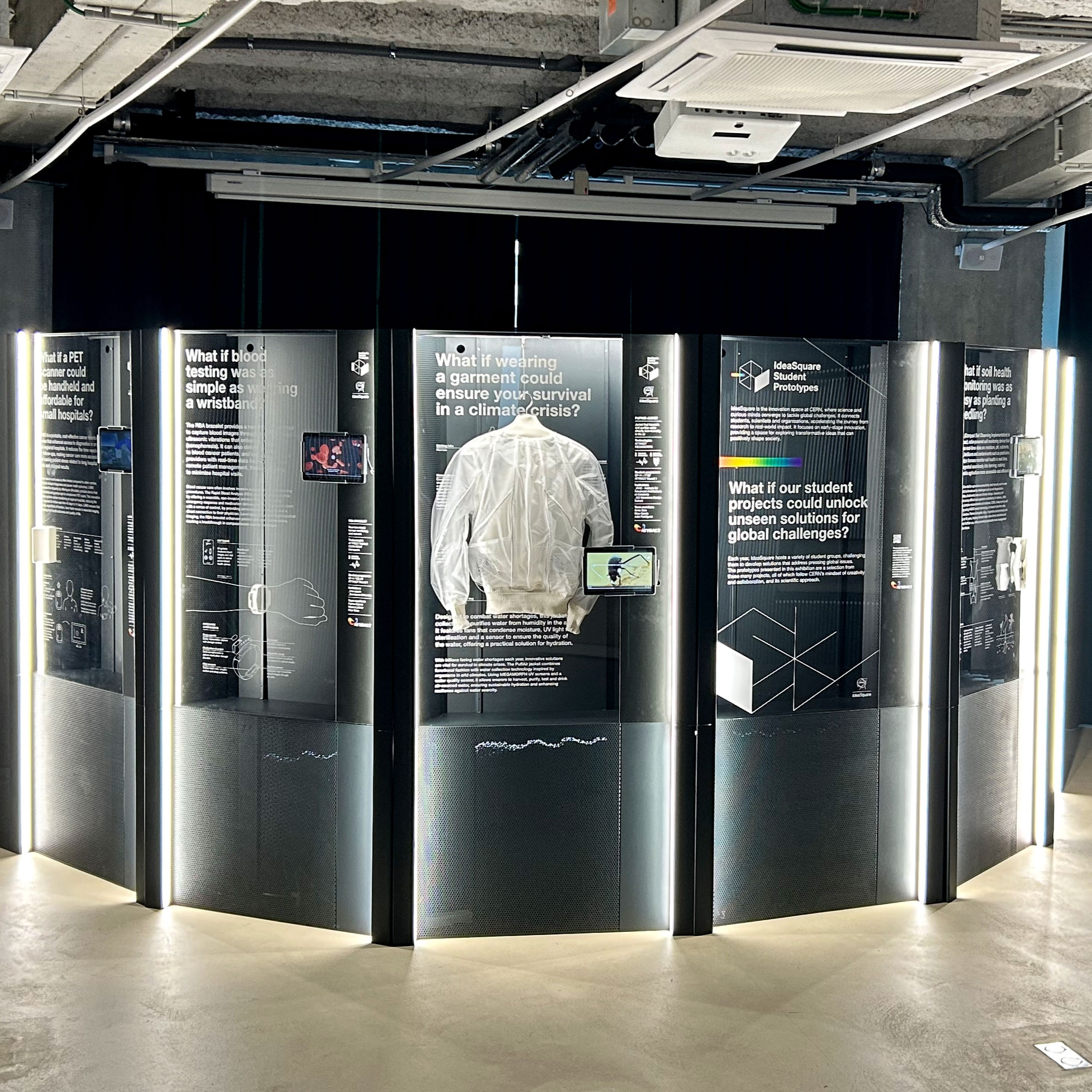Exhibition project “Aosta and Pompeii. Reflections of Augustan Concord at the origins of the Empire”
© Kevin Rossi
To mark the 2050th anniversary of the founding of Augusta Praetoria Salassorum, the MegaMuseo in Aosta is hosting a major exhibition that connects two cities that are apparently distant but united by a common destiny: Aosta and Pompeii. Reflections of Augustan Concord at the Origins of the Empire.
Curated by Patrizia Fortini and Cristiano Benedetto De Vita, the exhibition was produced by Visivalab for the Department of Cultural Heritage and Activities of the Autonomous Region of Valle d’Aosta, in collaboration with the most important Italian museums and cultural institutions.
The exhibition brings together an extraordinary collection of artefacts of great historical and archaeological value, confirming the scientific importance and international dimension of this exhibition initiative.
The entire exhibition is based on a powerful and symbolic idea: Augustan Concordia as the foundation of imperial identity, capable of uniting territories, peoples and cultures under the banner of Roman civilization.
CLIENT MegaMuseo – Megalithic Area of Aosta
CURATORS Patrizia Fortini, Cristiano Benedetto De Vita
DATES 8 May 2025 – 28 September 2025
FEATURES
- Exhibition project
- Museographic design of the exhibition
- Graphic design and visual identity of the exhibition
- Creation of an audiovisual narrative
- Graphic design of the catalogue
- Coordination of the loan campaign
- Management of transport and insurance of the works of art
- Coordination of production and assembly
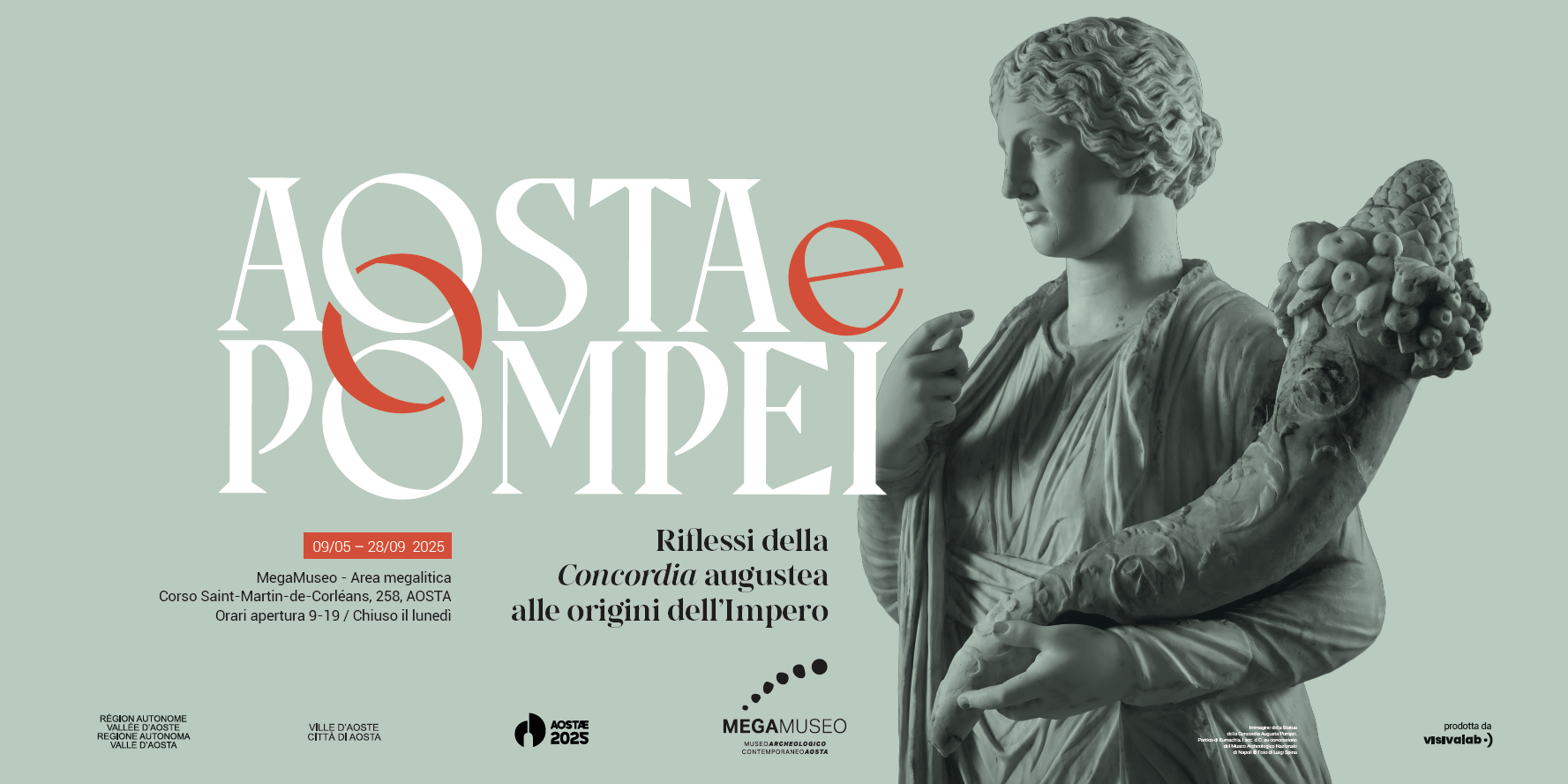
Project
Visivalab developed the entire exhibition project, from the narrative and museographic design to the production and staging.
Working closely with the scientific committee and curators, we have constructed a narrative that connects two very different urban and cultural contexts, highlighting the key role of the Augustan era in the transformation of the Roman world.
The result of this collaborative effort is an exhibition that combines scientific rigour and visual impact through accessible and engaging language.
LOAN CAMPAIGN
The exhibition brings together a collection of more than 150 pieces – statues, frescoes, inscriptions, everyday instruments and ritual objects – on loan from leading museums.
Visivalab coordinated the entire loan campaign, overseeing every stage of the process: from requesting the works to logistics, from insurance to transport, to the technical coordination of the museum installation.
Prestigious lenders involved include the Archaeological Park of Pompeii, the National Archaeological Museum of Naples, the Superintendence of Cultural Heritage and Activities of the Aosta Valley, the Archaeological Park of the Colosseum, the Capitoline Museums, the Museum of Roman Civilisation, the Archaeological Parks of Paestum and Velia, the Musée de l’Hospice du Grand-Saint-Bernard, the National Archaeological Museum of Aquileia, the National Archaeological Museum of Abruzzo – Villa Frigerj, and the Pier Alessandro Garda Civic Museum in Ivrea.
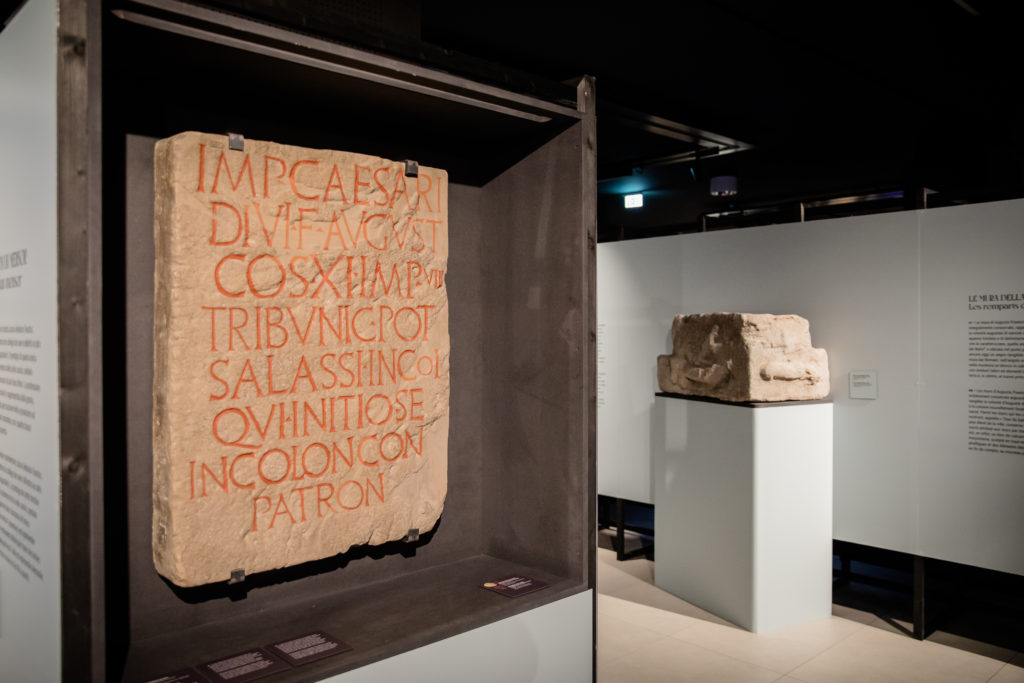
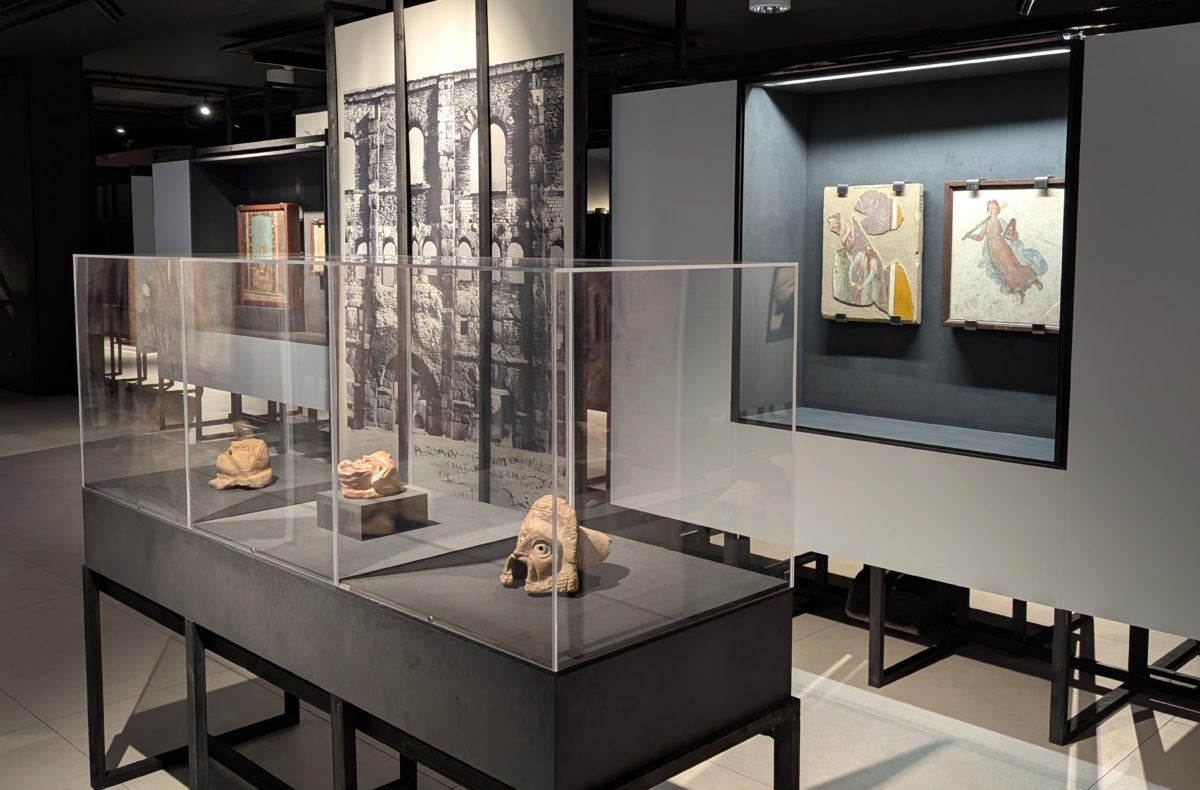
EXHIBITION ITINERARY DESIGN
Together with the curatorial team, we have constructed a narrative that revolves around the concept of Concordia: harmony between peoples, political pacification and cultural cohesion.
The exhibition explores the urban identity of Aosta as a strategically located Roman colony and the vitality of Pompeii, a city that was already developed but deeply integrated into Augustus’ imperial project.
The exhibition is divided into thematic sections that recount the planning of the territory, daily life, political and religious ideology, and the symbolic role of cities in the Empire.
In particular, one section is dedicated to previously unseen finds from recent archaeological excavations at high-altitude sites in the Aosta Valley, such as Col Fetita and Col Citrin, which narrate the Roman conquest through military finds such as projectiles, arrowheads, footwear and shields.
GRAPHIC IDENTITY AND SCENOGRAPHY
Visivalab designed the narrative, graphic and scenographic system for the entire exhibition, adopting an accessible yet vibrant language that is fully consistent with the scientific rigour of the exhibition.
Each section combines visual aids with exhibition texts, scientific illustrations and photographs, in dialogue with audiovisual materials and even an immersive experience. The aim: to contextualise the pieces and facilitate visitor understanding.
The graphic identity represents the idea of harmony, while using one of the most iconic pieces in the exhibition, providing coherence between curation, communication, museography and catalogue.
The installation is carried out on self-supporting structures to articulate the open space of the Megamuseo without altering the exhibition space. The scenography is sober yet evocative. An elegant and neutral colour palette dialogues with the materials and the frescoes on display. All these elements define this installation, which enhances the archaeological finds without overshadowing them and accompanies visitors on a coherent and refined visual journey.
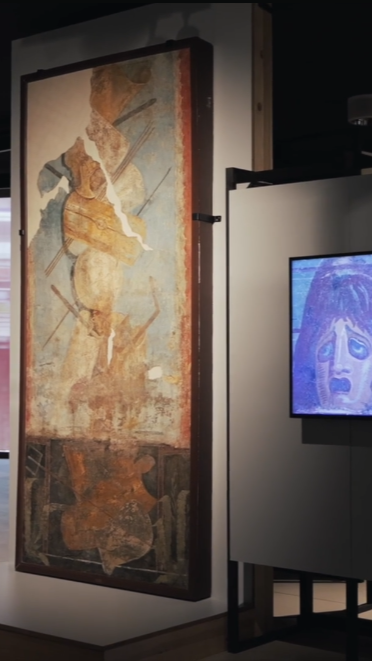
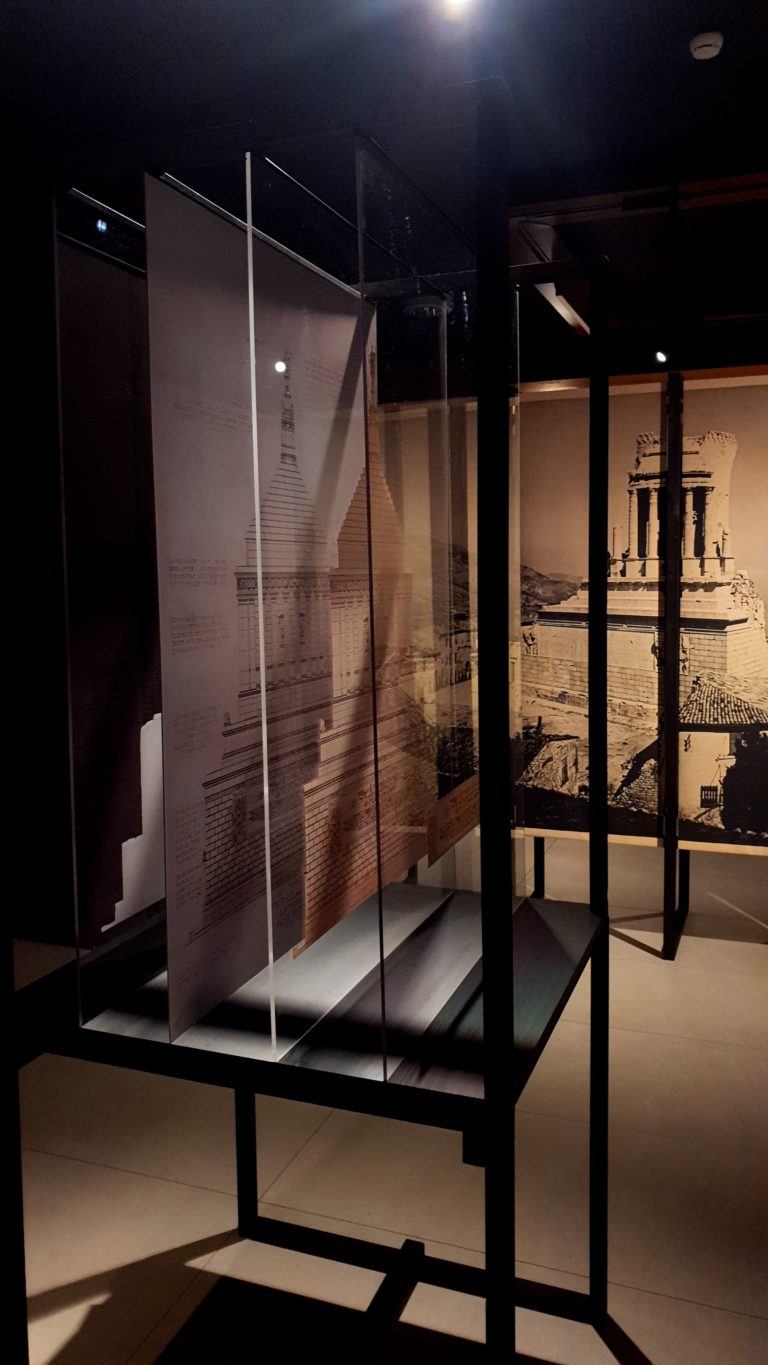
The space is organised according to a dual vertical and horizontal structure: the walls display findings, descriptive panels and multimedia elements, while the display cases exhibit everyday objects, sacred items, works of art and ancient crafts.
Welcoming visitors at the entrance, the statue of Concordia Augusta from the portico of Eumachia in Pompeii stands out as the visual and conceptual emblem of the entire exhibition, a symbolic synthesis of the message of harmony and cohesion conveyed by the exhibition.
Finally, interviews with scientists, audiovisual materials and reconstructions enrich the experience. In particular, the immersive space of the so-called Studiolo of the House of Augustus on the Palatine Hill evokes the atmosphere of the Augustan era and gives the public a glimpse of the origins of the Empire.
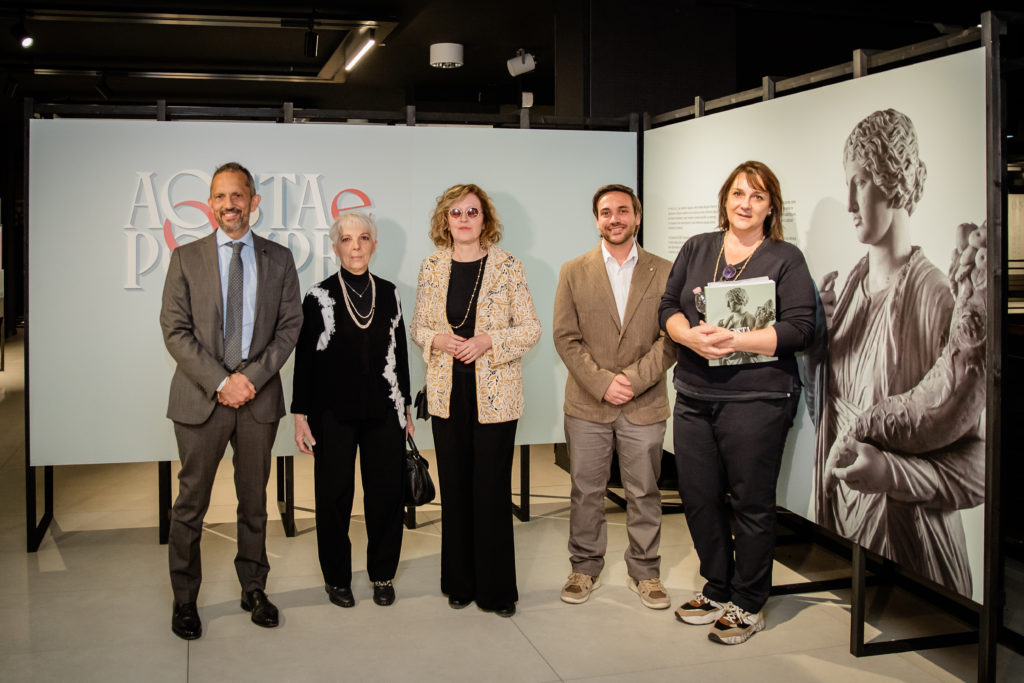
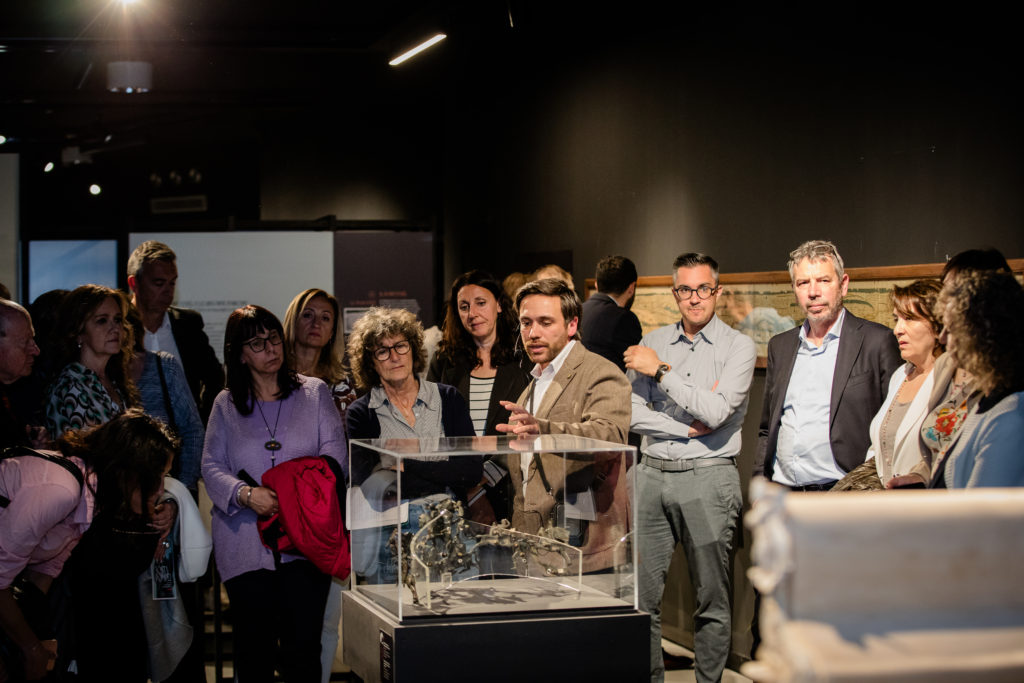
© Samuel Giudice – Regione autonoma Valle d’Aosta
OPENING CEREMONY
The exhibition opened its doors to the public on Thursday, 8 May 2025, with an opening ceremony attended by Jean Pierre Guichardaz, Advisor on Cultural Assets and Activities, Education and Intergenerational Relations Policy; Superintendent of Cultural Heritage and Activities Laura Montani, Head of Exhibition Activities Daria Jorioz, and curators Patrizia Fortini and Cristiano Benedetto De Vita.
During the event, the symbolic value of the exhibition and the role of culture as an instrument of cohesion and territorial growth were highlighted.
The initiative is part of the official calendar of celebrations for the 2050th anniversary of the founding of Augusta Praetoria, supported by the Autonomous Region of Valle d’Aosta and the Municipality of Aosta.
THE CATALOGUE
The exhibition is accompanied by a bilingual catalogue (Italian/French) edited by Patrizia Fortini and Cristiano Benedetto De Vita, published by Franco Cosimo Panini Editore.
The volume includes scientific contributions, in-depth analyses of the exhibition themes and images of the pieces on display.
ACKNOWLEDGEMENTS
This project has been made possible thanks to the collaboration of the lenders
- Aquileia, Museo Archeologico Nazionale
- Boscoreale, Antiquarium
- Bourg-Saint-Pierre, Musée de l’Hospice du Grand-Saint-Bernard
- Chieti, Museo Archeologico Nazionale d’Abruzzo – Villa Frigerj
- Ivrea, Museo Civico Pier Alessandro Garda
- Napoli, Museo Archeologico Nazionale
- Parchi Archeologici di Paestum e Velia
- Pompei, Parco Archeologico
- Roma, Musei Capitolini
- Roma, Museo della Civiltà Romana
- Roma, Parco archeologico del Colosseo
- Soprintendenza per i beni e le attività culturali della Valle d’Aosta
THE PRESS
La mostra che lega Aosta e Pompei
TGR Valle d’Aosta
“Aosta e Pompei”, statue e affreschi in mostra
raccontano le due antiche città romane
la Repubblica
Il compleanno di Aosta? È nel segno di Pompei:
una mostra sul rapporto con la città scomparsa
Il Mattino
Aosta e Pompei. Riflessi della Concordia augustea alle origini dell’Impero | Artribune
Artribune

